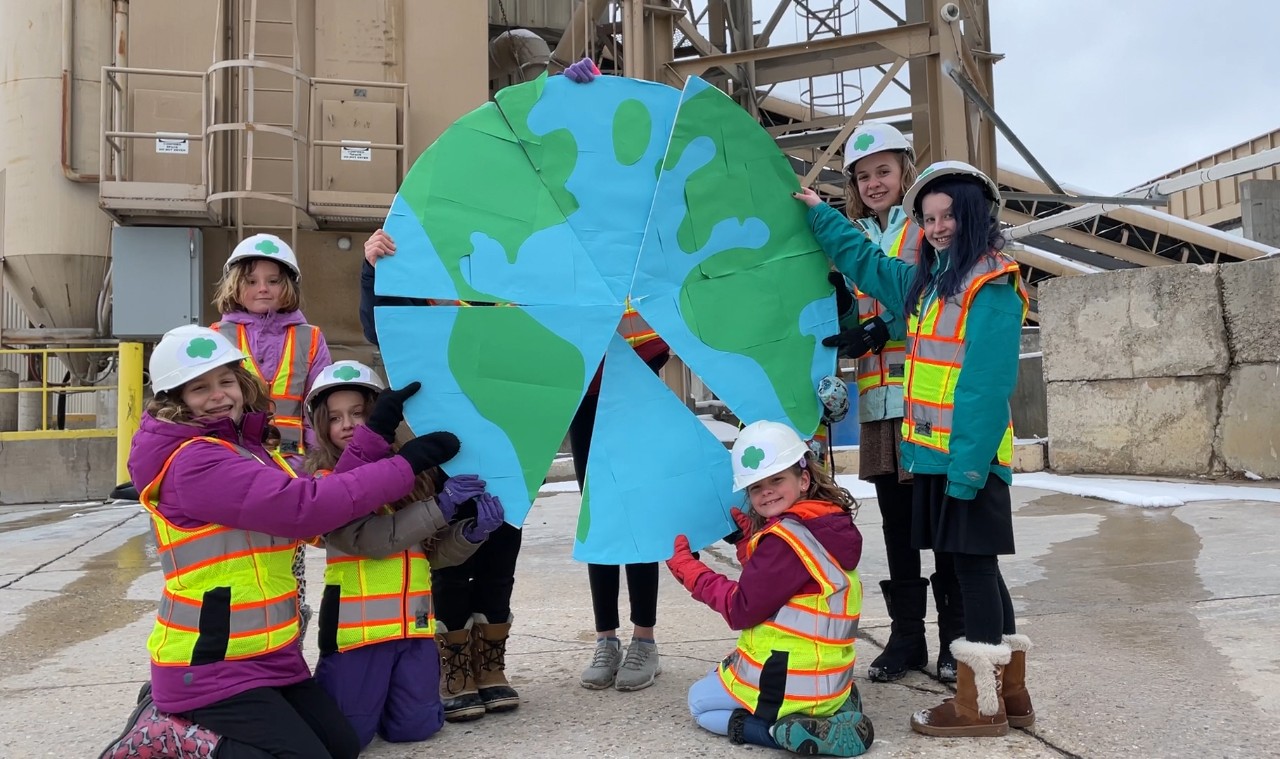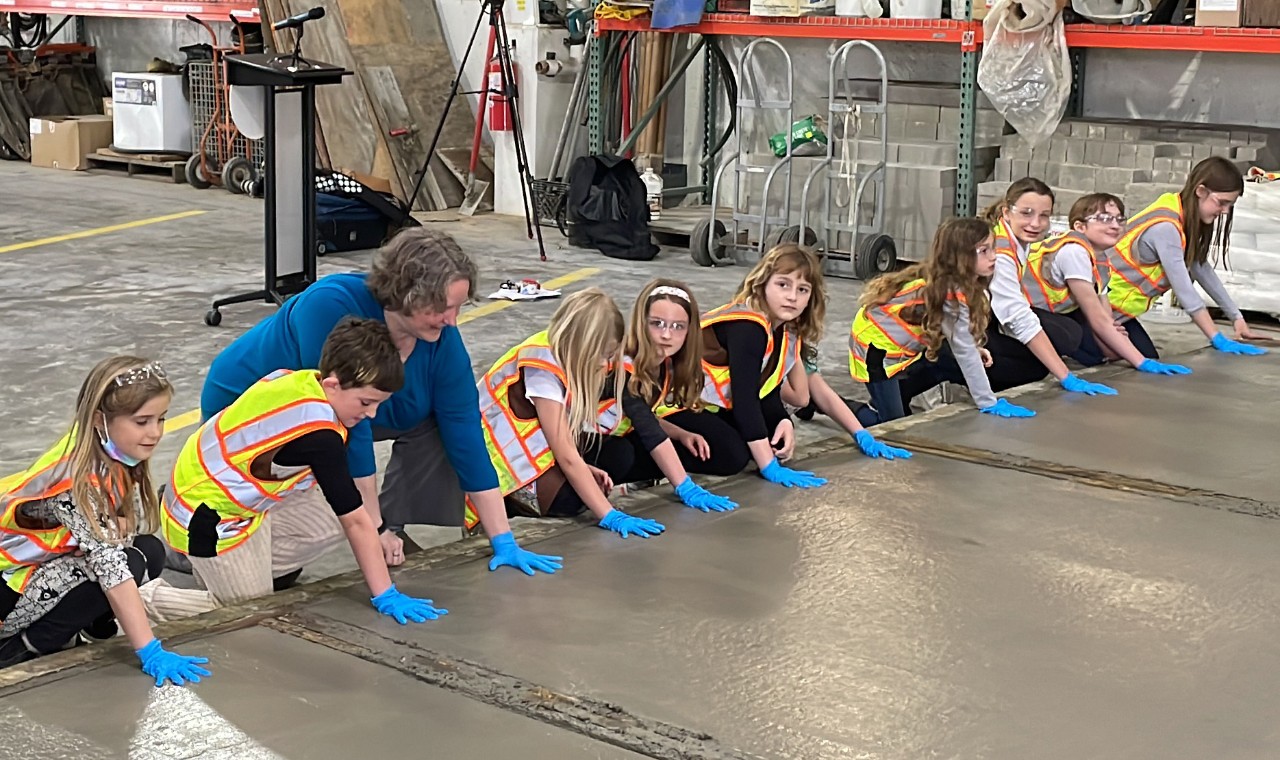Girl Scouts Advocate for Greener Concrete
What does concrete have to do with solving climate change? A lot, actually! Just ask Girl Scout Troop 1477 from Madison, Wisconsin.
The Cadettes partnered with Brownie Troop 1952 to focus on greener concrete for their Take Action project because they learned that while it isn’t talked about as much as solar panels or electric cars, concrete accounts for 8% of global carbon emissions each year. It’s commonly used as building material for roads, runways, buildings, bridges, parking structures, and pipes.
“Global warming is here and affecting people, and it will only get worse,” explains Girl Scout Everly. “We wanted to do something to help and found out that while concrete is one of the main contributors to climate change, it isn’t really talked about much yet. We saw a chance to help people understand that green building materials, including concrete with low embodied carbon (carbon footprint), can be part of the solution.”
Taking action on climate change
After choosing their topic, the troop got to work. With no connections to the concrete industry, they started by researching how concrete is made, how it can be made in a greener way, and what information would be important to relay to people involved with making building decisions.
They became subject matter experts by watching online engineering lectures; talking with concrete researchers, green building experts, and concrete professionals; attending virtual concrete conferences; and even touring a concrete plant.
The troop decided that making a video was the best way to advocate for greener concrete and get their message out to a wider audience. Taking the lead on production, they planned the visuals, drafted storyboards, drew concept art, and filmed the stop-motion scenes.
The finished product was an entertaining, educational video explaining greener concrete alternatives and how people can take action. They also produced a fun music video featuring original lyrics to accompany the video.
Making connections and spreading the word
The troop began sharing their video and reaching out to local industry professionals, climate change groups, as well as local and state governments. “Lots of people around the world have shared our videos, so that helps spread our message,” said Girl Scout Kara. “Most people know somebody who helps make buildings so we hope everyone can see [the videos] and start to use low carbon concrete.”
As word of their project spread through their community, the troop received invitations to speak with local industry and climate change groups. They presented to the Wisconsin chapter of the American Concrete Institute, and Wisconsin’s Office of Sustainability and Clean Energy. The Girl Scouts also got the opportunity to meet with Governor Tony Evers and Lieutenant Governor Mandela Barnes.
“It has been so exciting to hear from professionals around the world, including researchers, professors, industry representatives, and city officials. They’re telling us that they have played our video during their lectures, webinars, and in their boardrooms,” recalls Troop Leader Julia Pooler.
Their advocacy efforts have built connections and lead to action. After presenting to the Madison Board of Public Works, the board voted to investigate lower carbon concrete options. The troop also took part in the first low-carbon concrete test pour in the city of Madison and met with Mayor Satya Rhodes-Conway.
Big plans for the future
While their project has made a big impact on their community, it’s been an incredible learning experience for the Girl Scouts as well. “This project has really inspired me to get out and do something about climate change. It has taught me that I can make a difference and that I should,” said Girl Scout Ava while reflecting on the experience.
The troop has big plans for their ongoing advocacy work. They hope to continue to reach new audiences by educating and presenting about embodied carbon and low-carbon concrete in their home state, country, and the world.
Troop 1477 hopes that their advocacy work inspires others to act on the issues that matter to them. Troop member Basil’s advice is to “Notice that one thing that just fires you up, that makes you really want to change it. Then do something about it. It can be small. Just try. Keep working on that change and you'll make it far in your own way.”



